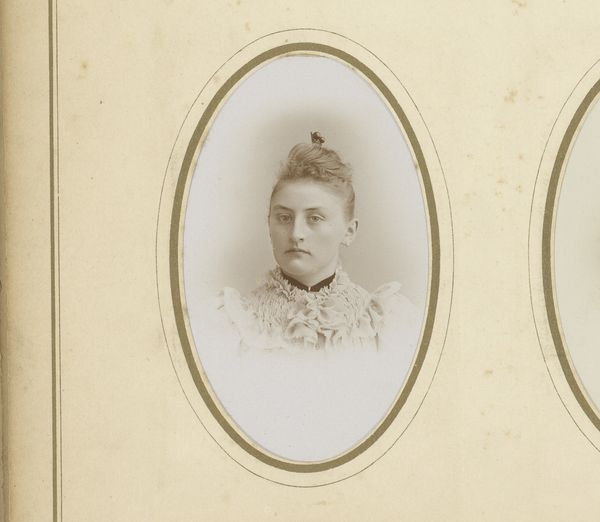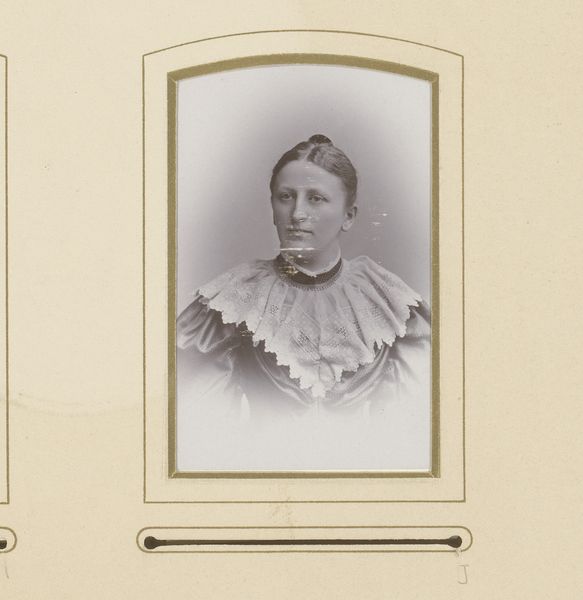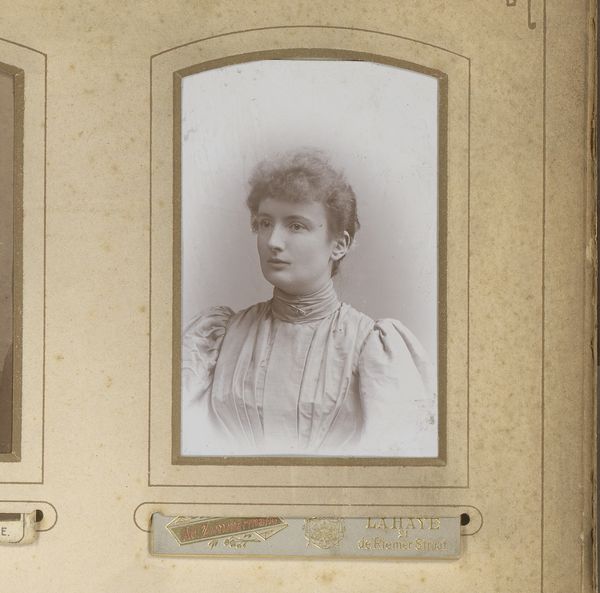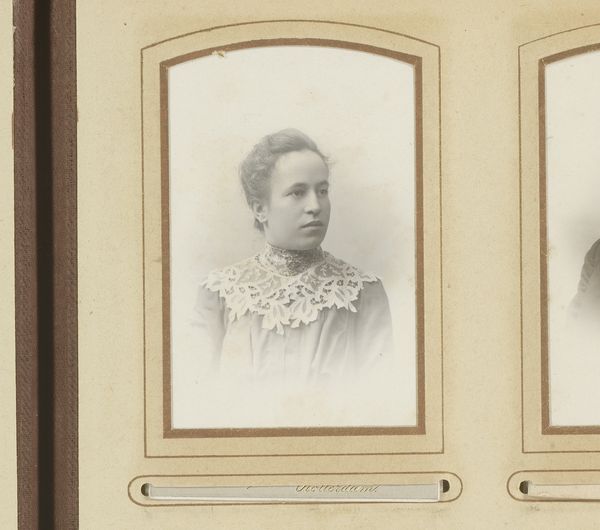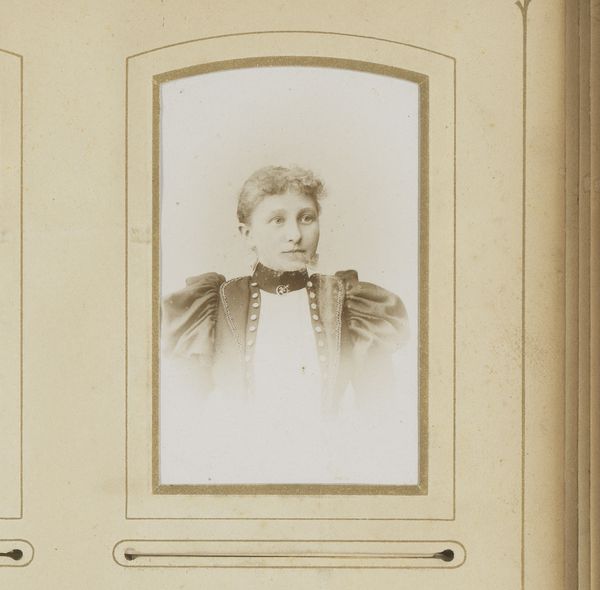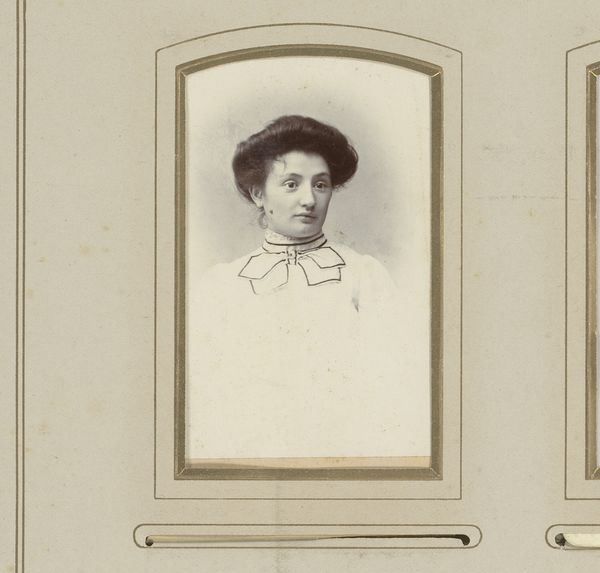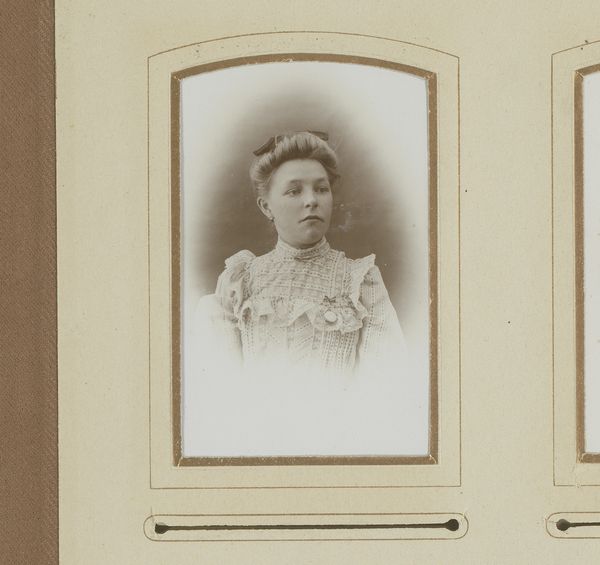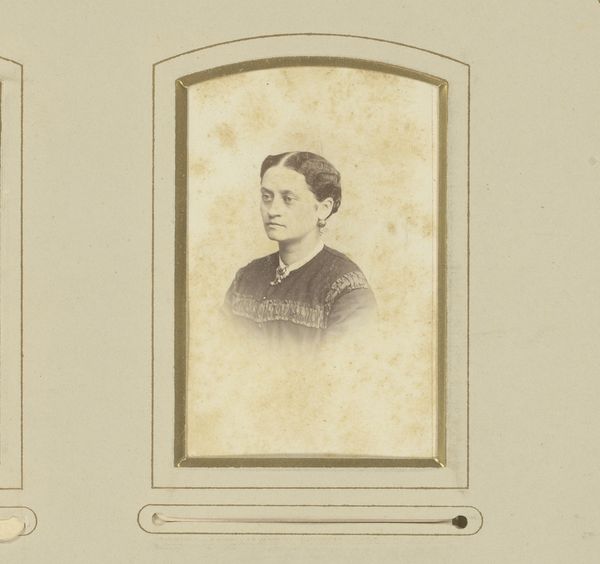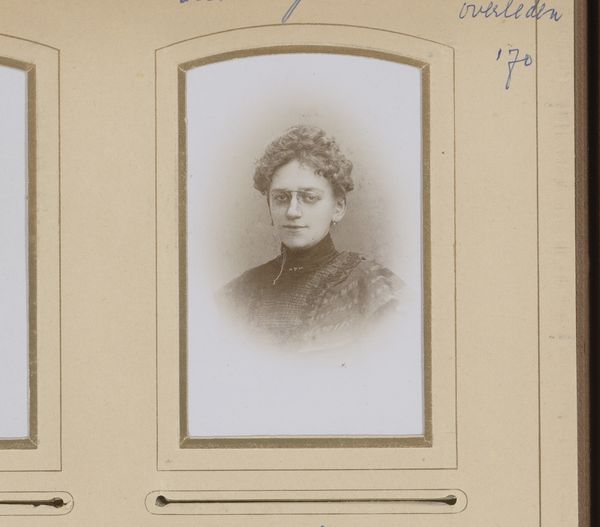
photography
#
portrait
#
photography
#
realism
Dimensions: height 84 mm, width 51 mm
Copyright: Rijks Museum: Open Domain
Curator: This is "Portret van een meisje," or "Portrait of a Girl," taken between 1883 and 1887, held here at the Rijksmuseum. Albert Greiner was the photographer. Editor: It's such a delicate image. The soft focus gives it this ethereal, almost dreamlike quality. The muted tones emphasize the lace details. Curator: Exactly. Photography at this time was heavily influenced by painting. Realism was ascendant. Photography provided a new avenue for portraiture accessible to a wider range of sitters. Consider how studio portraiture democratized representation. Editor: I'm curious about that lace. Was it handmade? Machine-made? The texture almost pulls you in, but its uniformity makes me wonder about its social implications – who produced it, under what conditions? We think about the photographer, Greiner, but what of the garment itself, its own labour story? Curator: A very good point. These are largely unanswered questions because studios mass-produced these photos and thus left little trace about how people obtained their costumes. Though its focus on Realism, the artistry is palpable. This level of detail demanded considerable skill in handling early photographic processes, making a simple object of art. Editor: The lighting really helps emphasize texture and creates an interesting sense of depth, despite the restricted tonal range. Curator: Photography was evolving rapidly then. It played an increasing role in defining beauty standards of the late 19th century as portrait galleries grew. Note also how this particular print seems intended to fit within a family album; it tells its own story about photographic consumption and its relationship to family narratives. Editor: Definitely, it gives off this uncanny sense of how portraits became ubiquitous—standardized even. We can still enjoy this young woman's likeness, captured forever on photographic emulsion, and wonder about who crafted the dress she is wearing. Curator: It offers such a rich understanding of not just aesthetic values but also how deeply ingrained consumerism was even then, making it all so hauntingly similar to our present reality. Editor: Right. We both see, maybe, different details and values in it but similarly wonder about photography’s impact, how even one object can invite consideration about aesthetics and consumption.
Comments
No comments
Be the first to comment and join the conversation on the ultimate creative platform.

